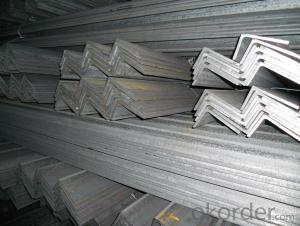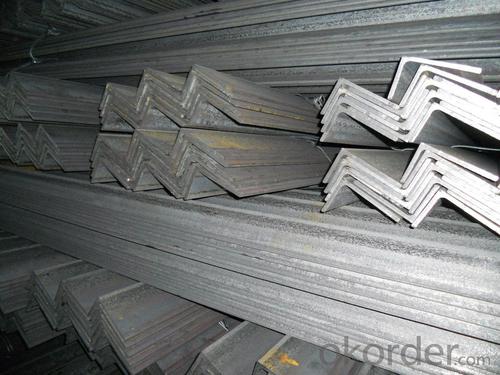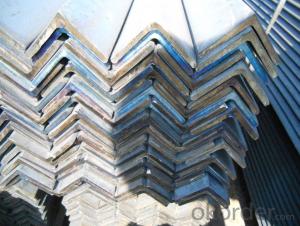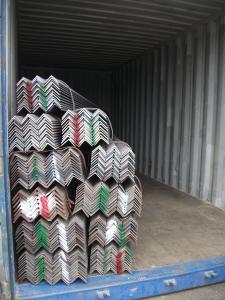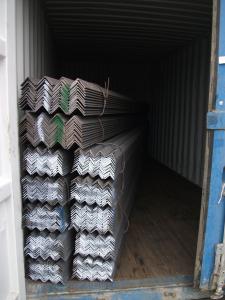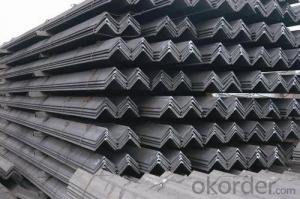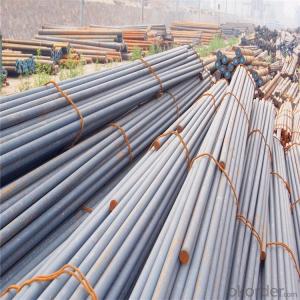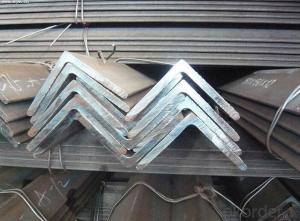S355JR Equal Unequal Angle bar building materials
- Loading Port:
- Tianjin
- Payment Terms:
- TT OR LC
- Min Order Qty:
- 25 m.t.
- Supply Capability:
- 25000 m.t./month
OKorder Service Pledge
Quality Product, Order Online Tracking, Timely Delivery
OKorder Financial Service
Credit Rating, Credit Services, Credit Purchasing
You Might Also Like
Specifications
Specifications
A36 equal angle steel in Shanghai
Prompt delivery,Premium quality
Accept customized sizes
Accept client's LOGO
A36 carbon steel iron angle sizes | |
| Size | 25mm*25mm-500mm*500mm |
Wall thickness | 2.0mm-25mm |
Length | 1m-12m ,by customer’s requiremnts |
Internatioanal Standard | ISO 9001-2008 / ISO 630 / |
Standards |
ASTMA53/ASTM A573/ASTM A283/Gr.D/
BS1387-1985/
GB/T3091-2001,GB/T13793-92, GB/T6728-2002/ ISO630/E235B/
JIS G3101/JIS G3131/JIS G3106/
|
Materials |
Q195,Q215,Q235B,Q345B,
S235JR/S235/S355JR/S355
SS440/SM400A/SM400B |
Product Category | Metallurgy,Mineral &Energy |
Technique | Welded |
Packing | 1.Big OD:in bulk 2.Small OD:packed by steel strips 3.woven cloth with 7 slats 4.according to the requirements of customers |
Usage | Mechanical&manufacture,Steel strcuture, Shipbuilding,Bridging,Automobile chassis |
Main market | Middle East,Africa, Asia and some Uropean country and America , Australia |
Country of origin
| China |
Productivity | 15000 Metric Tons pet Month |
Remark | Payment terms :T/T ,L/C Terms of trade :FOB ,CFR,CIF ,DDP,EXW Minimum order : 10 tons Lead time :on or before 3-15 working days . |
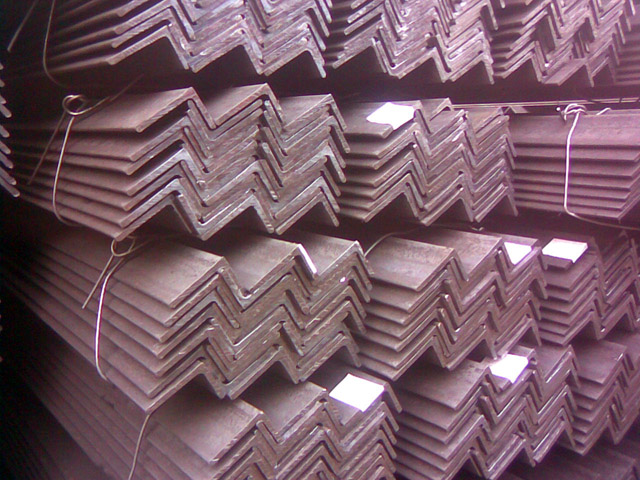
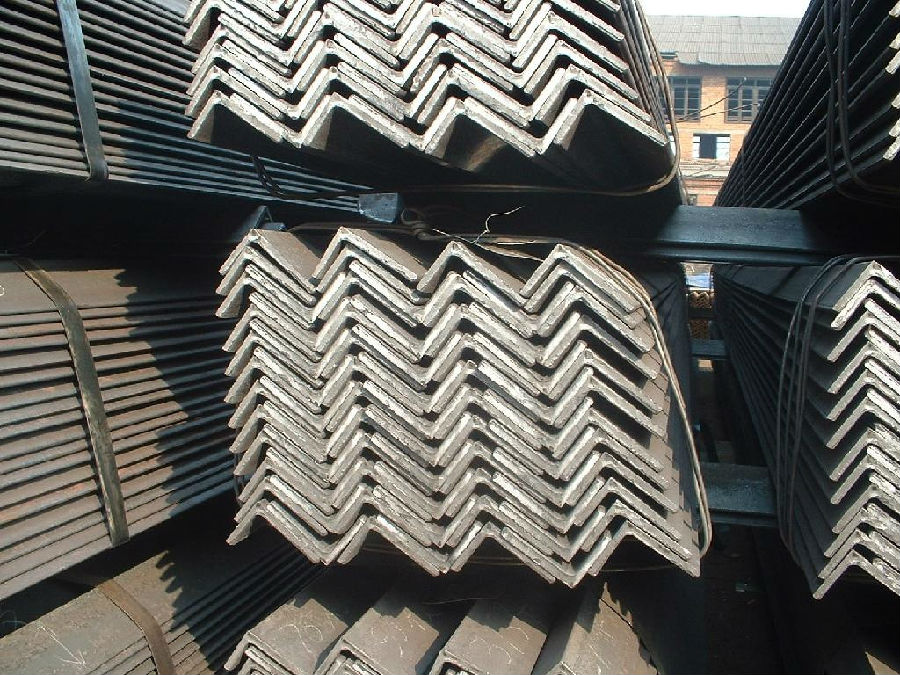
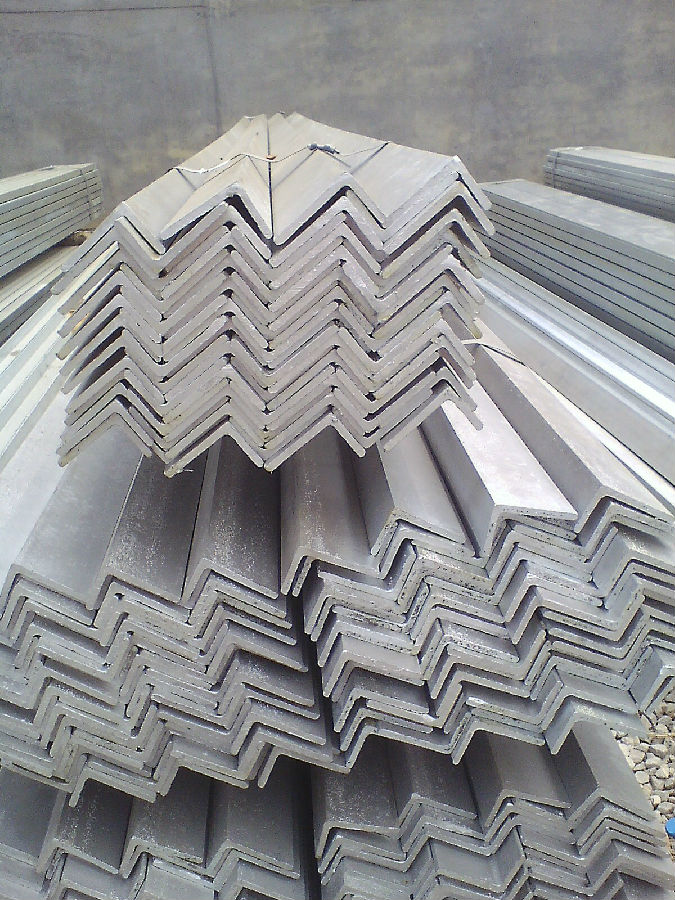
- Q: Where can steel angles be purchased?
- Steel angles can be purchased from a variety of sources. One option is to visit a local hardware store or building supply center that specializes in construction materials. These stores typically carry a wide range of steel products, including steel angles. Another option is to search online for suppliers or distributors that specialize in steel products. Many online retailers offer a wide selection of steel angles and provide the convenience of shopping from home. Additionally, contacting local steel fabrication companies or metal suppliers could be a good option, as they often sell steel angles in various sizes and grades. It is recommended to compare prices, quality, and reviews before making a purchase to ensure getting the best deal and product suitable for the intended use.
- Q: How to determine the neutral axis of the angle bar?
- The neutral axis is a line which is the intersection of the neutral plane and the neutral axis corresponding to the strong axis of the cross section. The neutral axis is equal to the bisector of the sectional area parallel to the curved main axis, and the area on both sides of the neutral axis is equal, and the biaxial symmetry section is the centroid axis.
- Q: What are the different types of connections used for steel angles in steel frames?
- There are several types of connections used for steel angles in steel frames, including welded connections, bolted connections, and riveted connections. Welded connections involve fusing the angles together using heat, creating a strong and permanent bond. Bolted connections involve using bolts and nuts to secure the angles together, allowing for easy disassembly if necessary. Riveted connections involve using rivets, which are metal pins, to hold the angles together by forming a permanent, tight fit. The choice of connection type depends on the specific requirements of the steel frame and the desired level of strength and durability.
- Q: How do you determine the required angle thickness for a specific application?
- Determining the required angle thickness for a specific application involves considering several factors. Firstly, it is important to understand the load or force that will be applied to the angle. This can be determined by analyzing the specific application and the expected weight or pressure that will be exerted on the angle. Secondly, the material of the angle must be taken into account. Different materials have different strength properties, and their ability to withstand the applied load will vary. It is crucial to select a material that has the required strength and durability for the specific application. Additionally, the length of the angle and the distance between its supports should be considered. Longer angles or larger distances between supports may require thicker angles to prevent buckling or bending under the applied load. Furthermore, environmental factors such as temperature, humidity, or corrosive substances may affect the required thickness of the angle. In corrosive environments, for instance, a thicker angle may be necessary to ensure its longevity and structural integrity. Lastly, any applicable building codes, regulations, or industry standards should be consulted to ensure compliance and safety. These guidelines often provide specific recommendations or requirements for angle thickness based on the intended application. In conclusion, determining the required angle thickness for a specific application requires analyzing the load, material strength, length, support distance, environmental factors, and relevant regulations. Proper consideration of these factors will help ensure the angle's ability to withstand the applied load and provide a safe and durable solution for the given application.
- Q: Can steel angles be used for manufacturing outdoor benches?
- Outdoor benches can indeed be manufactured using steel angles. These angles possess remarkable strength and durability, rendering them highly suitable for outdoor settings where benches may face harsh weather conditions. Moreover, it is effortless to weld steel angles together, allowing for the creation of a robust frame for the bench. This steel frame can then be combined with alternative materials like wood or metal slats to fashion the seating surface. In summary, steel angles are widely favored when it comes to manufacturing outdoor benches due to their exceptional strength, durability, and versatility.
- Q: Can steel angles be used in conveyor systems or material handling equipment?
- Yes, steel angles can be used in conveyor systems or material handling equipment. Steel angles, also known as angle iron, are commonly used in these applications due to their structural strength and versatility. They can be easily welded, bolted, or riveted together to create various framework structures for conveyors and material handling equipment. Steel angles provide stability, support heavy loads, and can be used to construct frames, supports, and guards for conveyor belts, rollers, chutes, and other components. Additionally, steel angles are available in various sizes and thicknesses to suit different application requirements, making them a popular choice in the construction of conveyor systems and material handling equipment.
- Q: Can steel angles be used for framing windows or doors?
- Framing windows or doors is indeed possible with steel angles. In construction, steel angles are widely employed for their robustness and endurance. As framing material, they offer essential support and stability. Moreover, steel angles can be easily tailored and trimmed to the desired length, rendering them suitable for framing windows and doors of different dimensions. Furthermore, by welding or bolting steel angles together, a robust frame can be fashioned capable of enduring substantial loads and furnishing the indispensable support for windows and doors.
- Q: What are the different methods of connecting steel angles to other structural elements?
- Different methods exist for connecting steel angles to other structural elements, depending on the specific application and load requirements at hand. One method commonly employed is welding, which involves the fusion of the steel angle to the other structural element through the application of intense heat. This results in a robust and enduring connection capable of withstanding high loads. Welding proves particularly useful when a permanent connection is necessary and substantial load requirements are present. Another method is bolting, wherein bolts and nuts are utilized to secure the steel angle to the other structural element. This approach allows for easy disassembly and reassembly if required, offering greater flexibility compared to welding. Bolting is typically chosen when an adjustable connection is desired or when the load requirements are relatively lower. Riveting represents an additional option for connecting steel angles to other structural elements. This method entails inserting a metal pin, known as a rivet, through aligned holes in both the steel angle and the other element, with the end of the rivet deformed to secure it in place. Riveting delivers a sturdy and dependable connection, although it may demand more time and labor compared to welding or bolting. Additionally, adhesive bonding can also be employed to connect steel angles to other structural elements. This technique utilizes specialized adhesives capable of bonding the surfaces of both the steel angle and the other element together. Adhesive bonding provides a strong and uniform connection, making it ideal for applications where aesthetics matter or when joining dissimilar materials is necessary. In summary, the various methods for connecting steel angles to other structural elements encompass welding, bolting, riveting, and adhesive bonding. The choice of method relies on factors such as load requirements, desired flexibility, ease of assembly and disassembly, and the specific application at hand.
- Q: How do you prevent galvanic corrosion between steel angles and aluminum components?
- One effective way to prevent galvanic corrosion between steel angles and aluminum components is by using a barrier such as a non-conductive coating or a primer. Applying a layer of paint or epoxy on the steel angles can create a protective barrier between the two metals, preventing direct contact and reducing the likelihood of corrosion. Additionally, using isolation materials like rubber or plastic gaskets between the steel and aluminum can also help minimize galvanic corrosion. Regular inspection and maintenance, including ensuring proper drainage and reducing moisture exposure, can further contribute to preventing galvanic corrosion in this scenario.
- Q: Can steel angles be used for underground or subterranean structures?
- Yes, steel angles can be used for underground or subterranean structures. Steel angles are versatile and commonly used in construction due to their strength, durability, and ability to withstand high levels of stress. In underground or subterranean structures, steel angles can be used for a variety of purposes such as providing structural support, reinforcing concrete walls or floors, or creating framing systems. They can also be used for retaining walls, tunnel linings, underground parking structures, or underground utility tunnels. The corrosion resistance of steel angles can be enhanced through various coatings or treatments, making them suitable for underground environments where moisture, soil, or other corrosive elements may be present. Overall, steel angles are a reliable and effective choice for underground or subterranean structures due to their strength, adaptability, and resistance to various environmental factors.
Send your message to us
S355JR Equal Unequal Angle bar building materials
- Loading Port:
- Tianjin
- Payment Terms:
- TT OR LC
- Min Order Qty:
- 25 m.t.
- Supply Capability:
- 25000 m.t./month
OKorder Service Pledge
Quality Product, Order Online Tracking, Timely Delivery
OKorder Financial Service
Credit Rating, Credit Services, Credit Purchasing
Similar products
Hot products
Hot Searches
Related keywords
